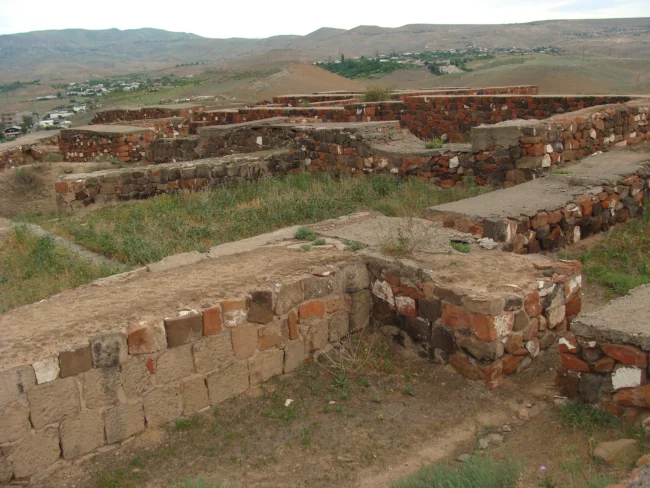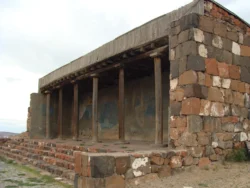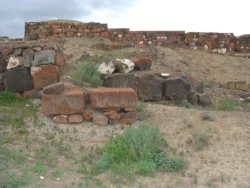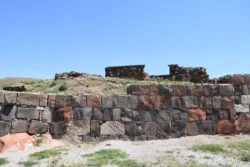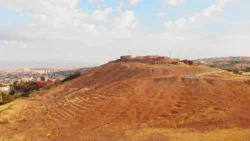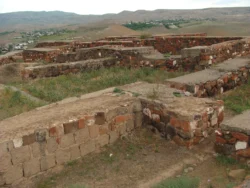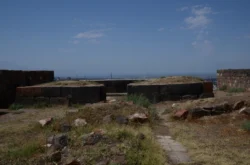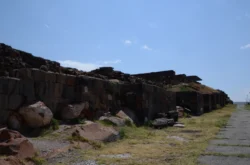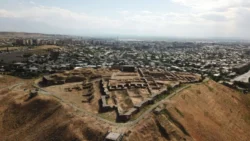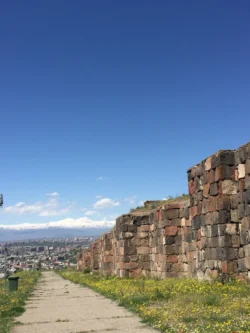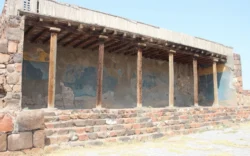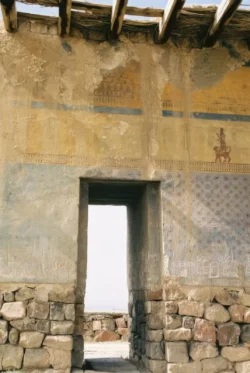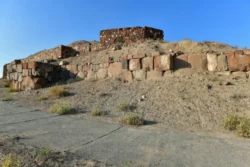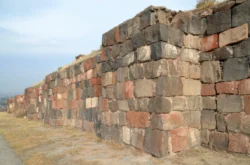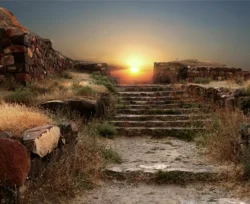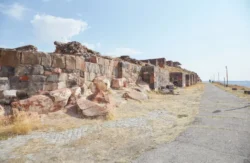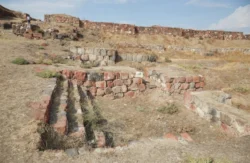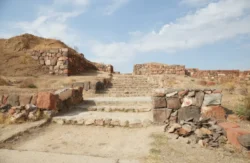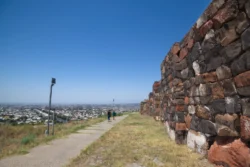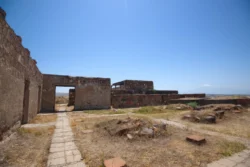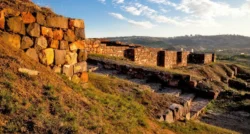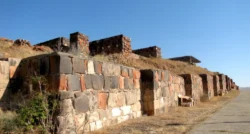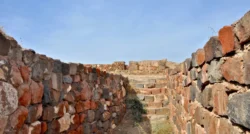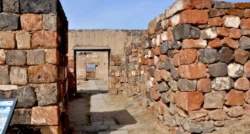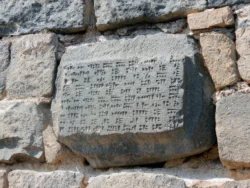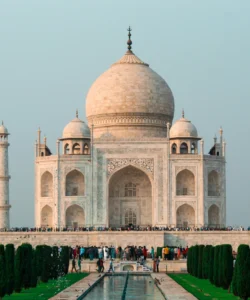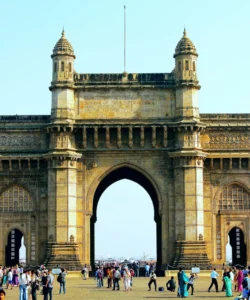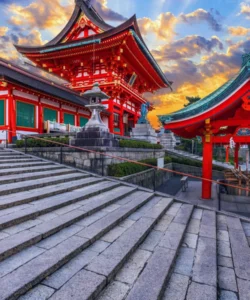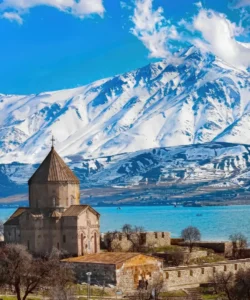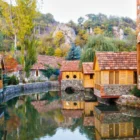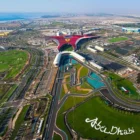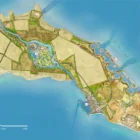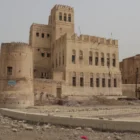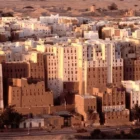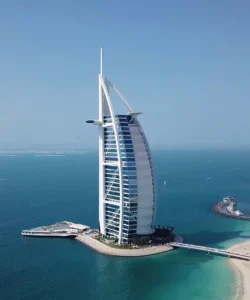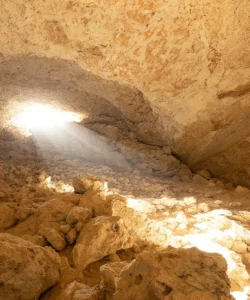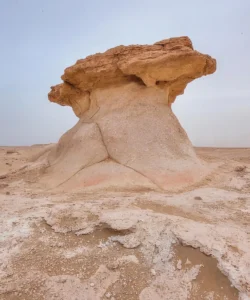Erebuni Fortress (also known as Arin Berd, meaning “Fortress of Blood,” or “Fortress of the Eagles”) is a significant archaeological site located in Yerevan, Armenia. Dating back to 782 BC, this ancient Urartian fortified city is considered the birthplace of modern-day Yerevan and offers a fascinating glimpse into the region’s early history.
Listen to an introduction about Erebuni Fortress
Name and Address
- Name: Erebuni Fortress (Armenian: Էրեբունի ամրոց, Erebuni amrots). The name Yerevan itself is derived from Erebuni.
- Address: 2 3rd St, Yerevan, Armenia.
- Location: Situated on the Arin Berd hill (approximately 65 meters / 213 feet high) in the southeastern outskirts of Yerevan’s Erebuni district. It offers dramatic views of the Ararat plain and the city.
How to Get There
Erebuni Fortress is easily accessible within Yerevan:
- By Public Transport:
- Take the metro to “Republic Square” (Hanrapetutyan Hraparak) or “Sasuntsi Davit” station.
- From there, you can catch a local bus (e.g., numbers 1 or 3) or a minibus (marshrutka) that will take you directly to Erebuni Fortress.
- By Taxi or Ride-Sharing: Taxis and ride-sharing services (like Yandex.Taxi or GG Taxi) are readily available in Yerevan and offer a convenient, direct route to the fortress.
- Walking: If you’re starting from central Yerevan (e.g., Republic Square), you can walk southeast along Tigran Mets Avenue and then Erebuni Street. The walk is approximately 4 km (2.5 miles).
- Visitor Information:
- Entrance Fee: There is a nominal entrance fee to the site and its adjacent museum.
- Hours: Typically open daily from 10:30 AM to 4:30 PM, but it’s advisable to check for current hours, especially during holidays.
Landscape and Architecture
Erebuni Fortress is a remarkable example of Urartian military and urban planning, strategically built on a hilltop overlooking fertile plains.
- Strategic Location: Built on a triangular plan atop the Arin Berd hill, the fortress commanded a panoramic view of the Ararat plain, making it an ideal military stronghold to protect the Urartian Kingdom’s northern borders.
- Fortification: The citadel was protected by formidable defensive walls, originally 10-12 meters (33-39 feet) high, constructed from basalt, tuff, wood, and adobe. These walls were often built in multiple rows and integrated with the hill’s steep slopes for maximum defense.
- Interior Layout: The fortress had a clear layout, separating palatial, religious, and economic structures. Key buildings included:
- A grand royal palace with a colonnaded assembly hall.
- A temple dedicated to Khaldi, the supreme Urartian god, which featured a large hall with an open 12-column portico.
- A citadel where the garrison resided.
- Living quarters, dormitories, and storerooms (including large karases or wine storage pitchers).
- Decorative Elements: The inner walls of the palace and temples were richly decorated with vibrant murals and frescoes, depicting religious scenes (like the god Khaldi standing on a lion), human figures, geometric patterns, and floral designs. Some of these ancient paintings, remarkably preserved, can still be seen today.
- Advanced Infrastructure: Archaeological excavations have revealed sophisticated ancient water pipe systems made of stone, demonstrating advanced engineering for its time.
- Erebuni Museum: Located at the foot of the hill, the Erebuni Historical and Archaeological Museum-Reserve houses over 12,000 artifacts discovered during excavations, including pottery, tools, weapons, bronze items, jewelry, and cuneiform inscriptions, providing invaluable insights into Urartian civilization.
What Makes It Famous
Erebuni Fortress is famous for several compelling reasons:
- Birthplace of Yerevan: It is widely recognized as the ancient foundation of modern-day Yerevan, with the city’s name directly deriving from “Erebuni.” Its founding in 782 BC makes Yerevan one of the world’s oldest continuously inhabited cities.
- Urartian Heritage: It is one of the best-preserved and most significant sites of the ancient Urartian Kingdom (9th-6th centuries BC), providing crucial archaeological evidence of this powerful civilization that predates the Armenian kingdom.
- Historical Inscriptions: The fortress contains cuneiform inscriptions by King Argishti I, detailing its construction and purpose, which were instrumental in establishing Yerevan’s ancient origins.
- Well-Preserved Art: The surviving vibrant frescoes and murals offer a rare glimpse into the artistic and religious practices of the Urartian period.
- Panoramic Views: Its strategic hilltop location provides breathtaking panoramic views of Yerevan city and the majestic Mount Ararat, making it a popular spot for photography.
Differences from Other Landmarks
Erebuni Fortress distinguishes itself from other Armenian historical sites in several key ways:
- Ancient Civilization: Unlike the medieval monastic complexes (Geghard, Tatev, Noravank) or early Christian cathedrals (Etchmiadzin, Zvartnots) that represent Armenia’s Christian era, Erebuni is a primary site from the much older Urartian Kingdom, offering insights into a distinct pre-Armenian civilization.
- Urban Foundation: While other sites are primarily religious or defensive structures in natural settings, Erebuni was founded as a full-fledged fortified city and administrative center, directly leading to the continuous habitation that evolved into a modern capital.
- Archaeological Focus: While other sites are largely standing structures, Erebuni is an active archaeological site and open-air museum, where visitors can walk among excavated ruins and see artifacts in situ, providing a different kind of historical immersion.
- Historical Continuity: Its unique claim to being the direct predecessor of Yerevan provides a compelling narrative of continuous urban development over nearly three millennia, a feature not shared by most other historical sites in Armenia.
Erebuni Fortress Photos:
